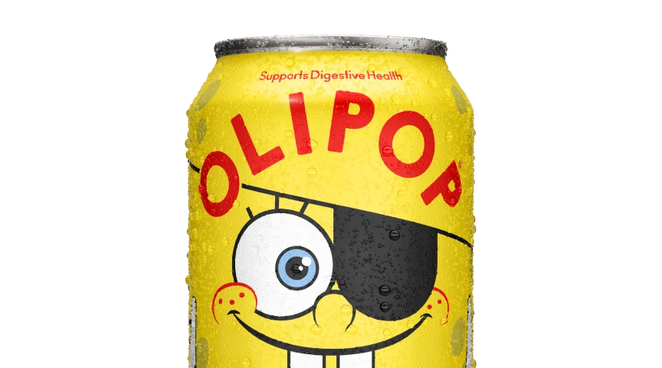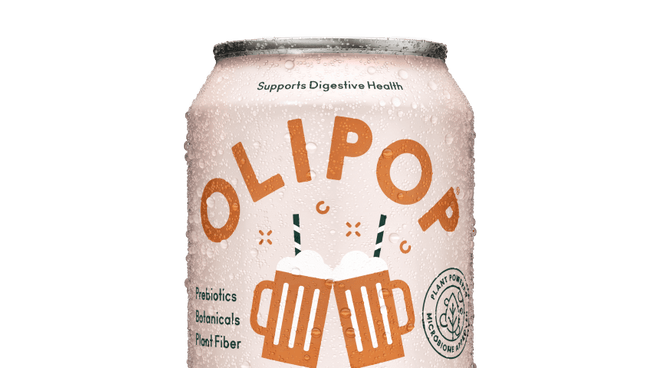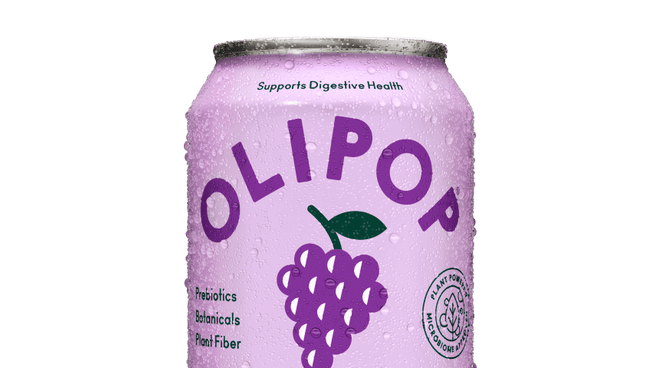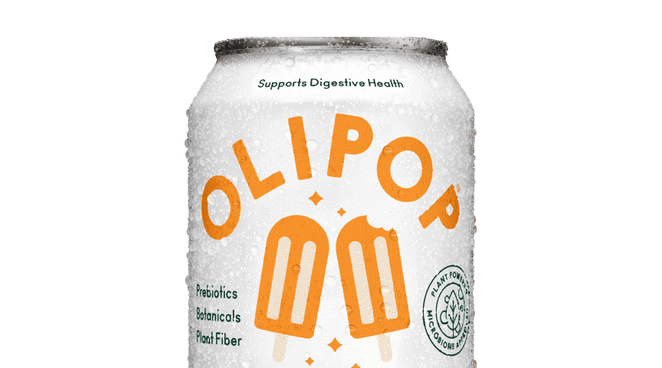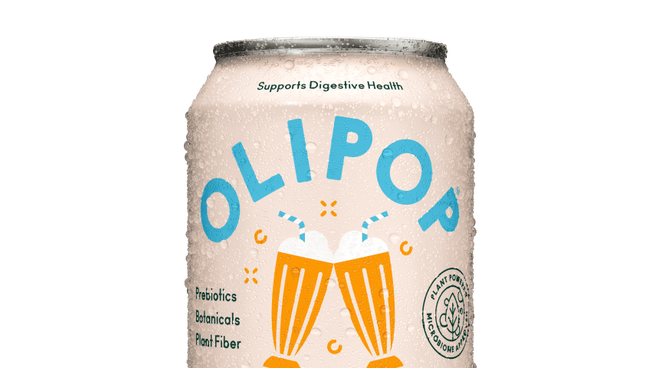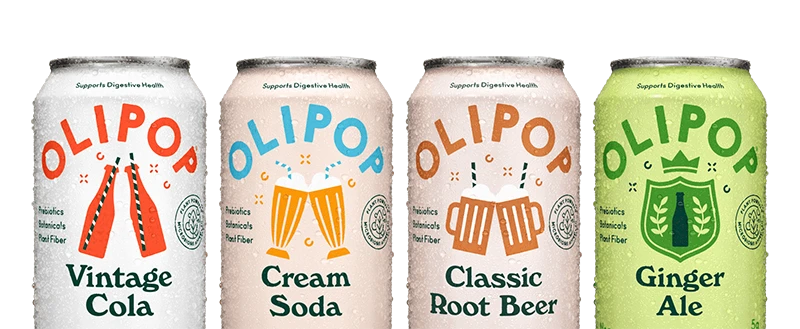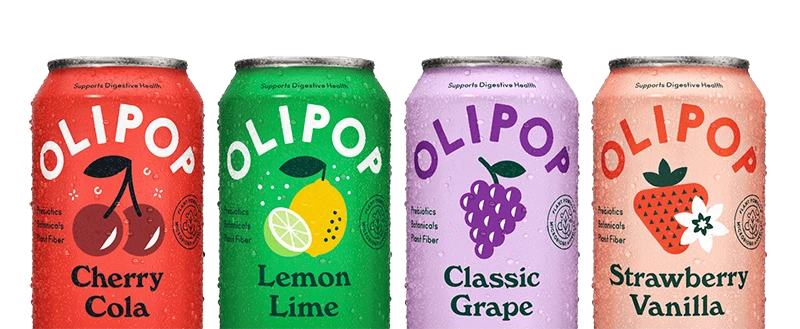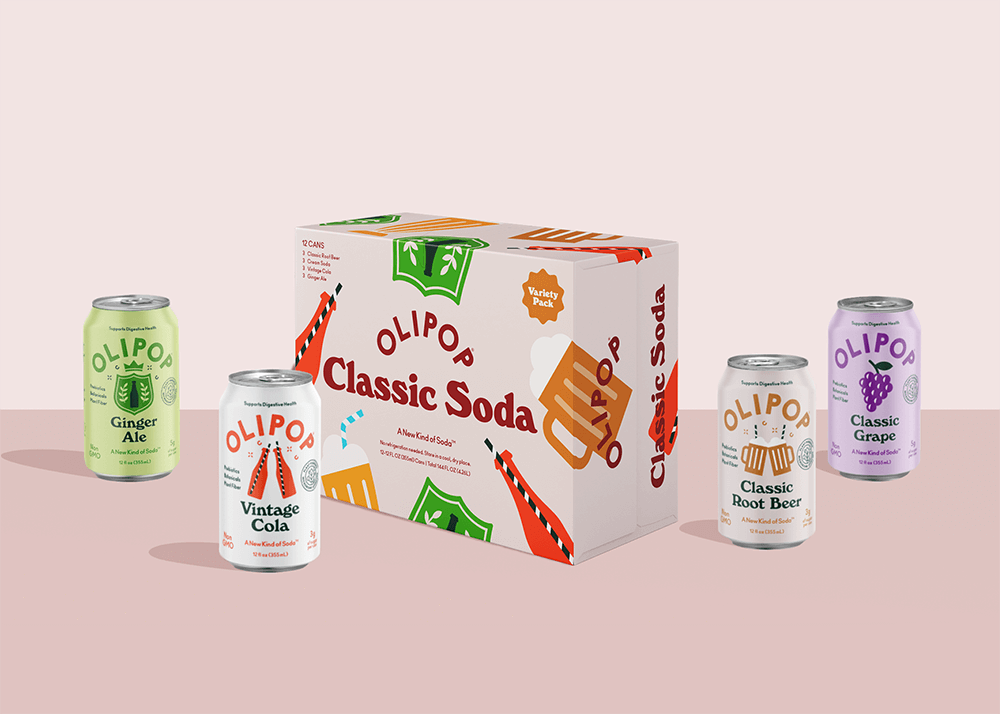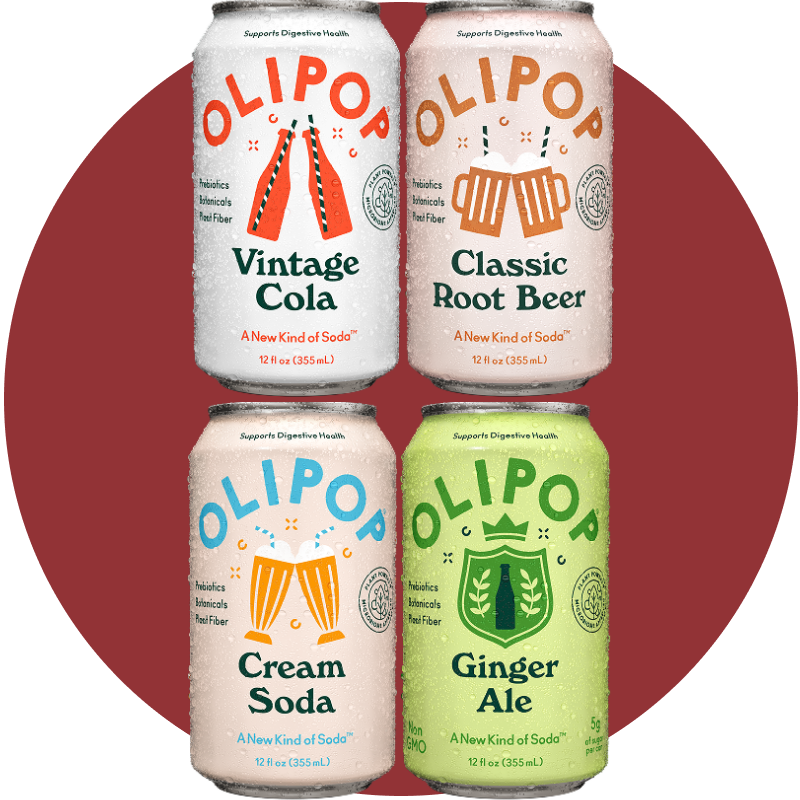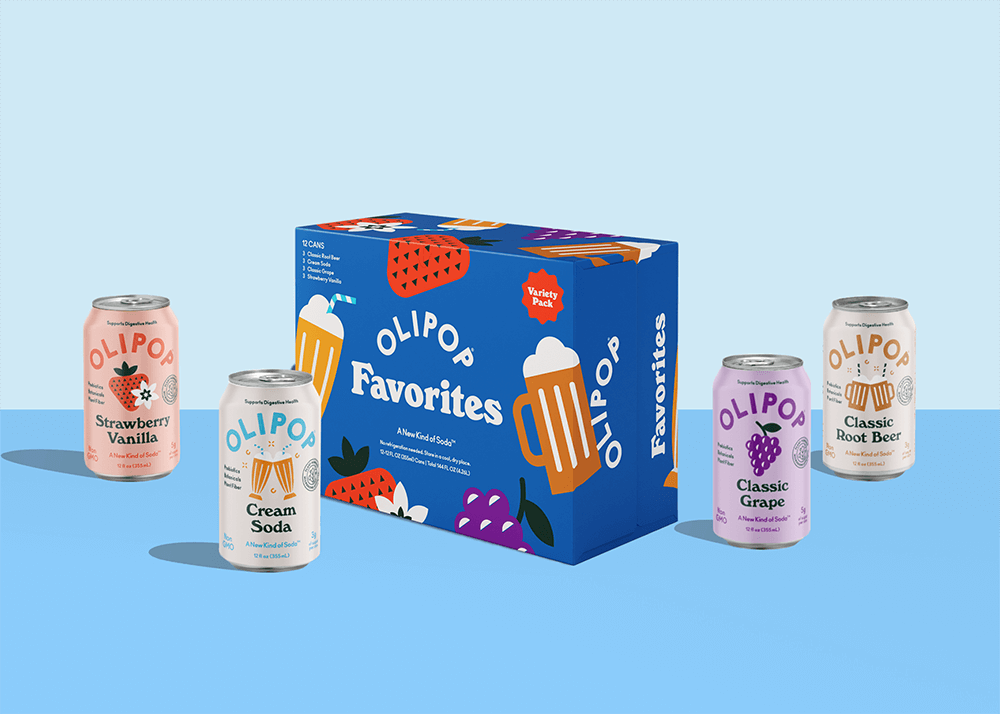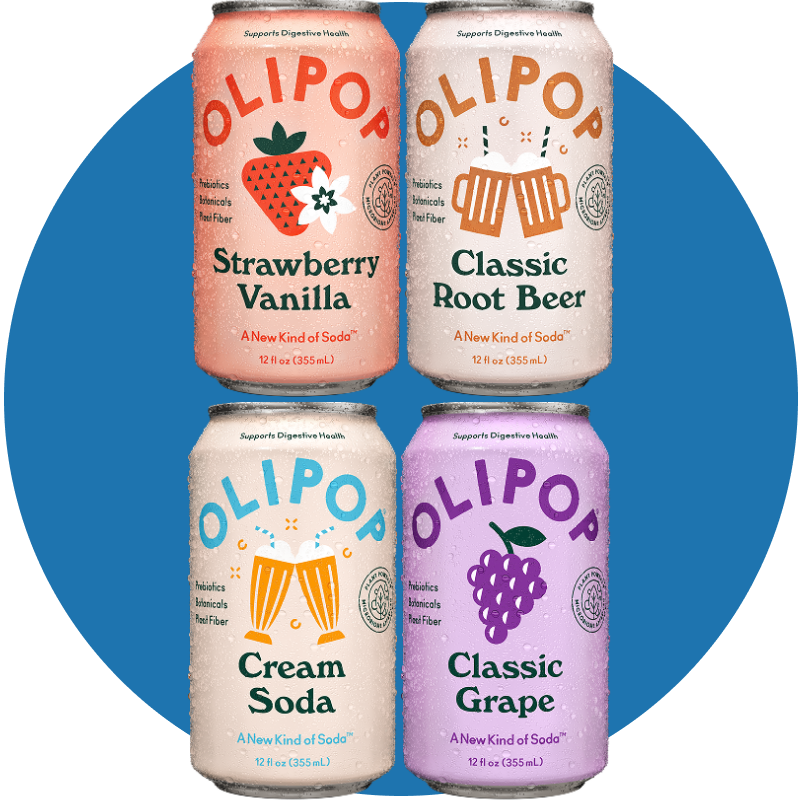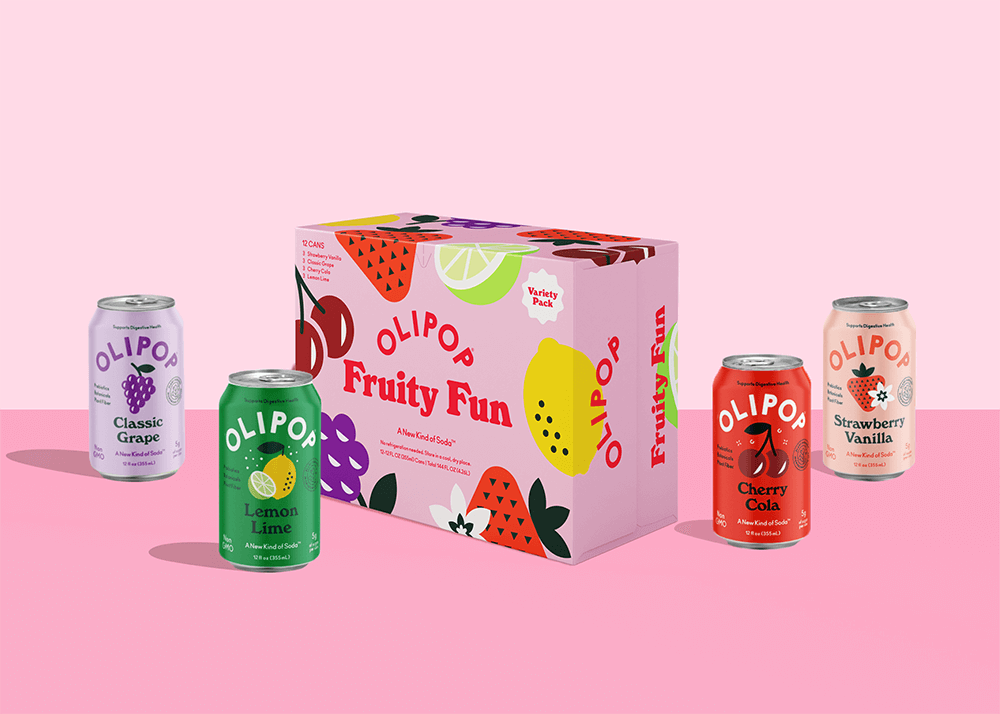When we talk about gut health, it’s hard to have a conversation without discussing prebiotics. While most of us are familiar with probiotics—the live microorganisms that can support gut and overall health when taken in adequate levels—prebiotics are another essential part of the gut health equation.
As the main food source for the beneficial bacteria that live in and on your body, prebiotics are crucial to helping the body function in a healthy way, and yet they don't get the attention they deserve. Here is everything you need to know about prebiotics and how to (deliciously) incorporate them into your routine!
What Are Prebiotics?
Prebiotics are compounds that act as food for the helpful microorganisms (aka your healthy bacteria) that live in and on your gut and body.1 When you eat prebiotics, the beneficial microbes in your gut transform them into compounds, like short-chain fatty acids (SCFA), that subsequently influence your overall health.2 For example, SCFAs play key roles that range from maintaining intestinal barrier integrity to supporting the immune system.3
Most prebiotic sources are soluble fibers. This fiber passes through your digestive tract undigested until it reaches the large intestine, where your gut microbiome is located. It’s here that the beneficial bacteria in your gut ferment these fibers into gut health-supporting compounds.
While most prebiotics are fibers, not all fibers are prebiotic.4 To be considered a “prebiotic,” the fiber has to be processed by specific health-promoting microorganisms in your microbiome.5 Other types of fiber have different benefits, like bulking up stool or slowing digestion.6 7
Besides dietary fibers, recent studies suggest that two other compounds — dietary polyphenols ( micronutrients that naturally occur in plants) and certain polyunsaturated fatty acids (like omega-3 fatty acids) — may also have prebiotic effects.6 8
What Are Probiotics?
On the other hand, probiotics are live bacteria that benefit the host, aka you! These beneficial microorganisms make their way through our digestive system until they get to our gut microbiome, where they interact with the existing beneficial bacteria in your gut to provide numerous benefits.9
While many fermented foods (like kombucha or yogurt) contain live and active bacteria, most of these foods and drinks don’t meet the criteria to be a “probiotic” because they either don’t have the necessary amount of bacteria to affect your health or their beneficial bacteria don’t survive the journey through your digestive system to reach the microbiome. That being said, there are still numerous ways that these fermented foods can support your gut health!10
Types of Prebiotics
Just like how there are different strains of probiotics, there are various types of prebiotics. These prebiotics possess different health benefits and feed different types of beneficial gut bacteria.11 12
Depending on which foods you eat, you’ll consume different types of prebiotics.
Three prebiotic fibers — galacto-oligosaccharides (GOS), fructo-oligosaccharides (FOS), and inulin — are the most commonly known and well researched prebiotics. Other types of prebiotics include resistant starch, polydextrose, xylo-oligosaccharide (XOS), and iso-maltooligosaccharides (IMO). 6
What makes these prebiotics different from each other is their structure. Let’s use oligosaccharides as an example. An oligosaccharide is a type of long-chain carbohydrate that is made up of simple sugars, or monosaccharides. Fructo-oligosaccharides are short chains of fructose molecules, galacto-oligosaccharides are short chains of galactose molecules, xylo-oligosaccharides are short chains of xylose molecules, and so on. 13
Humans lack the digestive enzyme that breaks down the bonds between each simple sugar in oligosaccharides, which is why your body cannot break down these fibers during digestion. Instead, the fibers are passed undigested into the lower gut where they’re fermented and metabolized by specific species of gut bacteria that do have the digestive enzymes that can break those bonds.14
*Fun fact: The “OLI” in OLIPOP is a hat-tip to oligosaccharides!
What Foods Have Prebiotics?
There are dozens of food sources of prebiotics.
Table 1 – Types and sources of prebiotics.
|
|
Sources of prebiotic |
|
|
|
|
|
|
|
|
|
|
|
|
|
|
|
|
|
|
|
|
|
Note. Adapted from “Prebiotics as Functional Foods: A Review,” by S.H. Al-Sheraji, Journal of Functional Foods, vol. 5, no. 4, 2013, pp. 1544.
1. Asparagus
A favorite side no matter the season, asparagus is a good source of prebiotic fiber. This green vegetable contains a type of prebiotic called fructooligosaccharides.
When preparing your asparagus, leave the peeler to the side. While scraping off the outer layer of asparagus may make this vegetable look fit for a fine dining experience, the outside part of the asparagus contains significant levels of prebiotic fructans—even more than the center.15
2. Wheat Bran
Wheat is the most commonly-consumed prebiotic food in America. Wheat contributes 69% of the inulin and 71% of the oligofructose we consume on a daily basis. 16While you consume wheat through a variety of ways — pasta, bread, pizza, and cereal — to get the most prebiotic bang for your buck, opt for wheat bran or whole grain wheat bread with no added sugar.
3. Onions
Don’t cry over this fun fact: onions account for roughly 25% of your inulin and oligofructose intake per day!16 Keep onions in your diet to load up on their prebiotic benefits.
4. Garlic
Next to onions, garlic is one of the most common sources of prebiotics in our diets. Each little bulb is packed with prebiotics: fructo-oligosaccharides make up 60% of their composition.17
5. Jerusalem Artichoke
Jerusalem artichokes, or sunchokes as some people call them, are a variety of sunflower native to North America that are harvested for their fiber and starch-rich roots. This tuber contains many beneficial vitamins, minerals, and nutrients, but its main redeeming quality is its prebiotic inulin content, which ranges from 9 to 12% of its fresh weight.18 Try making a Jerusalem artichoke mash to reap their benefits.
6. Apples
An apple a day may help keep the bad bacteria away! But you have to eat the peel! Apple skin is the most highly concentrated source of pectin and pectic oligosaccharides (POS), which some preliminary studies have shown to have prebiotic effects.1920 To reap any prebiotic benefits of apples, make sure to eat the whole fruit when you grab one—that includes the fiber-rich skin. There are currently no published studies that show apple derivatives, like apple cider vinegar, contain enough pectin to act as a prebiotic.
7. Oats
Another reason to pour yourself a bowl of oatmeal in the morning. Oats are a good source of not one, but two types of prebiotics: resistant starch and beta-glucan fiber.21 Take your oatmeal up a prebiotic notch by adding some green banana and apple to it!
8. Cassava Root
Cassava root is the starchy, fibrous tuber of a woody shrub native to South America. As a drought-tolerant, carbohydrate-rich crop, cassava is a major staple food in many developing countries and provides a basic diet for over half a billion people.22 Cassava root contains prebiotic fructo-oligosaccharides.23 While stumbling upon fresh cassava root isn’t too easy, you can incorporate cassava into your diet by looking for cassava flour in your local grocery store’s baking aisle. It’s a great gluten-free flour substitute.
9. Bananas
The most popular fruit in America is a good source of fructo-oligosaccharides, which make up 30% of the fruit.17 Unripe, or “green,” bananas contain high levels of resistant starch (specifically, RS2), a type of carbohydrate that has prebiotic effects. An unripe banana contains anywhere from 2 to 3 grams of resistant starch per 100 grams of food.24
10. Chicory Root
Chicory root is harvested from a blue flowering plant in the dandelion family. It has been used for centuries for medicinal and food purposes and is most commonly used now as a caffeine-free coffee substitute because of its woody and nutty flavor. Chicory root — one of the three prebiotic fibers you’ll find in OLIPOP — is one of the most well-researched sources of prebiotic inulin, which accounts for up to 68% of the total compounds present in fresh chicory roots.25
11. Dandelion Greens
You may look at this weed differently now! If you peek just below dandelions’ beautiful yellow flowers, you’ll get a look at the plant’s fiber-rich leaves, which can be cooked or consumed raw. Dandelion greens contain 2 grams of fiber per 1 cup,26 some of which comes from prebiotic inulin, which also makes up 45% of the plant’s roots.27
Why Is It Important to Eat Prebiotic Foods?
Your gut microbiome plays various roles in your body that range from supporting the immune system to producing essential vitamins and hormones to even influencing your mood and cognitive function. When you support your gut microbiome, you’re directly supporting your overall health. One way to take care of the trillions of beneficial bacteria that live and work in your gut microbiome is to feed those microorganisms the nutrients they need to function at their best. And those nutrients are prebiotics. Bacteria eat what we eat, and because our bacteria crave prebiotics, we need to eat prebiotics.
How Many Prebiotics Should You Eat per Day?
Right now, there is no official recommendation for an “adequate intake” of prebiotics.28 The USDA recommends consuming a minimum of 28 grams of fiber per day, based on a 2,000-calorie diet, so if you can hit this recommendation by consuming a variety of fiber-rich foods, you can likely consume sufficient levels of prebiotics. (And sipping on a can of OLIPOP will make that even easier!)
Are There Prebiotics in OLIPOP?
Yes! Most sodas are void of nutritional value, but OLIPOP is different. Rather than being packed with sugar, our 2–5g sugar sodas are made with research-backed prebiotics that support digestive health and a healthy gut microbiome. Having a soda that contains prebiotic fiber is one simple and convenient way to support your gut health in a delicious and functional way. Drinking a can of OLIPOP will not only satisfy your sweet tooth, but it will also give your body a boost of nutrients that support overall health.
Prebiotics: The Takeaway
When you’re looking to keep your gut microbiome balanced, look no further than adding prebiotic-rich foods to your diet. Prebiotics can help modulate the immune system, promote satiety, support bowel habits, and even support mineral absorption.29
To increase the amount of prebiotic fiber in your diet, you can start by increasing the number of whole plant foods you eat per day. While not all plants contain prebiotic fibers, if you eat a variety of plants, chances are, you will also consume prebiotics. Choosing foods like asparagus, Jerusalem artichoke, garlic, oats, cassava root, onions, chicory root, and OLIPOP are all excellent additions to your prebiotic-rich diet.
Resources
- International Scientific Association for Probiotics and Prebiotics. “Prebiotics.” International Scientific Association for Probiotics and Prebiotics (ISAPP), 16 July 2020, isappscience.org/for- scientists/resources/prebiotics.
- Blaak, E. E., et al. “Short Chain Fatty Acids in Human Gut and Metabolic Health.” Beneficial Microbes, vol. 11, no. 5, 2020, pp. 411–55. Crossref, doi:10.3920/bm2020.0057.
- Silva, Ygor Parladore, et al. “The Role of Short-Chain Fatty Acids From Gut Microbiota in Gut-Brain Communication.” Frontiers in Endocrinology, vol. 11, 2020. Crossref, doi:10.3389/fendo.2020.00025.
- ---. “Prebiotics.” International Scientific Association for Probiotics and Prebiotics (ISAPP), 10 Apr. 2020, isappscience.org/for-consumers/learn/prebiotics.
- Gibson, Glenn R., et al. “Expert Consensus Document: The International Scientific Association for Probiotics and Prebiotics (ISAPP) Consensus Statement on the Definition and Scope of Prebiotics.” Nature Reviews Gastroenterology & Hepatology, vol. 14, no. 8, 2017, pp. 491–502. Crossref, doi:10.1038/nrgastro.2017.75.
- ISAPP Board of Directors. “Infographic: Understanding Prebiotics and Fiber.” International Scientific Association for Probiotics and Prebiotics (ISAPP), 18 Apr. 2019, isappscience.org/infographic-fiber-prebiotics.
- Roberfroid, M. “Dietary Fiber, Inulin, and Oligofructose: A Review Comparing Their Physiological Effects.” Critical Reviews in Food Science and Nutrition, vol. 33, no. 2, 1993, pp. 103–48. Crossref, doi:10.1080/10408399309527616.
- Alves-Santos, Aline Medeiros, et al. “Prebiotic Effect of Dietary Polyphenols: A Systematic Review.” Journal of Functional Foods, vol. 74, 2020, p. 104169. Crossref, doi:10.1016/j.jff.2020.104169.
- ---. “Probiotics.” International Scientific Association for Probiotics and Prebiotics (ISAPP), 15 Aug. 2020, isappscience.org/for-scientists/resources/probiotics.
- GMFH Editing Team. “New Gut Microbiota for Health Infographic on Fermented Foods and Gut Microbiota.” Gut Microbiota for Health, 21 May 2020, www.gutmicrobiotaforhealth.com/new- Gut-microbiota-health-infographic-fermented-foods-gut-microbiota.
- Al-Sheraji, Sadeq Hasan, et al. “Prebiotics as Functional Foods: A Review.” Journal of Functional Foods, vol. 5, no. 4, 2013, pp. 1542–53. Crossref, doi:10.1016/j.jff.2013.08.009.
- Carlson, Justin L., et al. “Health Effects and Sources of Prebiotic Dietary Fiber.” Current Developments in Nutrition, vol. 2, no. 3, 2018. Crossref, doi:10.1093/cdn/nzy005.
- ScienceDirect. “Oligosaccharide - an Overview.” ScienceDirect Topics, 9 Nov. 2021, www.sciencedirect.com/topics/nursing-and-health-professions/oligosaccharide.
- Davani-Davari, Dorna, et al. “Prebiotics: Definition, Types, Sources, Mechanisms, and Clinical Applications.” Foods, vol. 8, no. 3, 2019, p. 92. Crossref, doi:10.3390/foods8030092.
- Witzel, Katja, and Andrea Matros. “Fructans Are Differentially Distributed in Root Tissues of Asparagus.” Cells, vol. 9, no. 9, 2020, p. 1943. Crossref, doi:10.3390/cells9091943.
- Moshfegh, Alanna J., et al. “Presence of Inulin and Oligofructose in the Diets of Americans.” The Journal of Nutrition, vol. 129, no. 7, 1999, pp. 1407S-1411S. Crossref, doi:10.1093/jn/129.7.1407s.
- Sangeetha, P. T., et al. “Recent Trends in the Microbial Production, Analysis and Application of Fructooligosaccharides.” Trends in Food Science & Technology, vol. 16, no. 10, 2005, pp. 442–57. Crossref, doi:10.1016/j.tifs.2005.05.003.
- Bach, Vibe, et al. “Effects of Harvest Time and Variety on Sensory Quality and Chemical Composition of Jerusalem Artichoke (Helianthus Tuberosus) Tubers.” Food Chemistry, vol. 133, no. 1, 2012, pp. 82–89. Crossref, doi:10.1016/j.foodchem.2011.12.075.
- Koutsos, Athanasios, et al. “Apples and Cardiovascular Health—Is the Gut Microbiota a Core Consideration?” Nutrients, vol. 7, no. 6, 2015, pp. 3959–98. Crossref, doi:10.3390/nu7063959.
- Chung, Wing Sun Faith, et al. “Prebiotic Potential of Pectin and Pectic Oligosaccharides to Promote Anti-Inflammatory Commensal Bacteria in the Human Colon.” FEMS Microbiology Ecology, vol. 93, no. 11, 2017. Crossref, doi:10.1093/femsec/fix127.
- Fehlbaum, Sophie, et al. “In Vitro Fermentation of Selected Prebiotics and Their Effects on the Composition and Activity of the Adult Gut Microbiota.” International Journal of Molecular Sciences, vol. 19, no. 10, 2018, p. 3097. Crossref, doi:10.3390/ijms19103097.
- S. Mombo et al., “A Socio-Scientific Analysis of the Environmental and Health Benefits as Well as Potential Risks of Cassava Production and Consumption,” Environmental Science and Pollution Research 24, no. 6 (December 24, 2016): 5207–21, https://doi.org/10.1007/s11356-016-8190-z
- Sancho, Renata A. Soriano, et al. “Evaluation of Oligosaccharide Profiles in Selected Cooked Tubers and Roots Subjected to in Vitro Digestion.” LWT - Food Science and Technology, vol. 76, 2017, pp. 270–77. Crossref, doi:10.1016/j.lwt.2016.07.046.
- Patterson, Mindy A., et al. “Resistant Starch Content in Foods Commonly Consumed in the United States: A Narrative Review.” Journal of the Academy of Nutrition and Dietetics, vol. 120, no. 2, 2020, pp. 230–44. Crossref, doi:10.1016/j.jand.2019.10.019.
- Nwafor, Ifeoma Chinyelu, et al. “Chemical Composition and Nutritive Benefits of Chicory(Cichorium Intybus)as an Ideal Complementary and/or Alternative Livestock Feed Supplement.” The Scientific World Journal, vol. 2017, 2017, pp. 1–11. Crossref, doi:10.1155/2017/7343928.
- U.S. Department of Agriculture. “Dandelion Greens, Raw.” FoodData Central, 1 Apr. 2019, fdc.nal.usda.gov/fdc-app.html#/food-details/169226/nutrients.
- Wirngo, Fonyuy E., et al. “The Physiological Effects of Dandelion (Taraxacum Officinale) in Type 2 Diabetes.” The Review of Diabetic Studies, vol. 13, no. 2–3, 2016, pp. 113–31. Crossref, doi:10.1900/rds.2016.13.113.
- Roberfroid, Marcel, et al. “Prebiotic Effects: Metabolic and Health Benefits.” British Journal of Nutrition, vol. 104, no. S2, 2010, pp. S1–63. Crossref, doi:10.1017/s0007114510003363.
- Mouw, Megan. “The Different Ways That Prebiotics and Fiber Affect the Gut Microbiota.” Gut Microbiota for Health, 25 Mar. 2020, www.gutmicrobiotaforhealth.com/the-different-ways-that- prebiotics-and-fiber-affect-the-gut-microbiota.
- As the main food source for the beneficial bacteria that live in and on your body, prebiotics are crucial to helping the body function in a healthy way.
- Fun fact: The “OLI” in OLIPOP is a hat-tip to oligosaccharides!
- Wheat is the most commonly-consumed prebiotic food in America.








